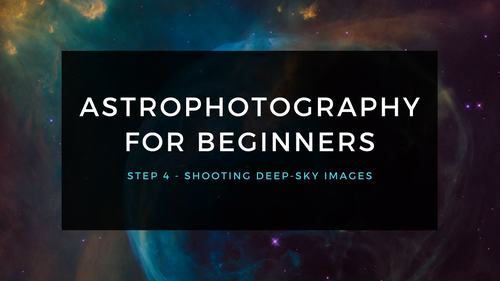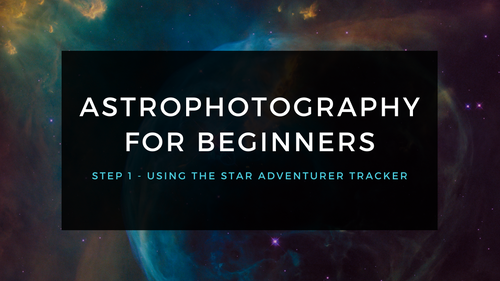







Why Purchase from All-Star Telescope?
Free Expert Support
Whether you are a first timer needing help with setting up or an enthusiast that can't quite make that one thing work, our expert staff are ready to support your needs. With decades of knowledge and first hand experience we've been there and we can help you through it!
Stress Free, Secure Transactions
You can trust purchasing and delivery with All-Star Telescope. All of our transactions are 100% secure and Level 1 PCI DSS compliant thanks to Shopify's ShopPay platform. For additional protection, we insure 100% of the value of every shipment we make. If it get's lost during shipment, we replace it. If it gets damaged during shipment, we replace it. We make sure your product arrives exactly as you would expect it to; we promise.
We also ensure privacy protection. We never keep any of your credit card information on file and any of your personal data is stored according to our policies.
30 Day Return Policy
Buy with confidence knowing that we accept returns up to 30 days after purchase. We want you to have something you will actually use and we are confident that we keep good quality products in our store with No Junk.
Price Match Promise
Shipping around for the best price is tough, we make it easier by offering the best pricing in the market. But if you find a better price on an in-store item somewhere else we will match it!
Product Description
Important: Please use a separate 12V power supply rather than the power hub in the ASIAIR Pro as the hub cannot provide enough amperage to power the camera's TEC coolers.
By popular demand, we now introduce the ASI461MM Pro. ASI461MM Pro adopts Sony medium format IMX461 sensor. It has the native 16-bit ADC with 65536 levels, back-illuminated structure and high quantum efficiency, and a great performance in DSO imaging, milky way imaging and scientific research. It features very low readout noise and nearly zero visible fixed-pattern noise, all at nearly 102MP!
Some of the highlights include:
- Back-illuminated sensor – improving sensitivity and reducing noise
- 3.4" format with 3.76 µm pixel size – ideal for many types of telescopes
- 16-bit ADC – giving a high dynamic range
- An impressive 50.3ke- full well capacity- helping to reduce the issue of for example saturated stars
- 11656x8750 extreme resolution – with the Bin2-mode the camera can operate at a resolution of 5826*4375 and pixel size of 7.52 um.
On top of this, not only does it have a very high QE-value with a peak at about 91%, but also feature an ultra-low readout noise of 1.0e. If you are looking for a large-format monochrome camera for astrophotography, you can’t go wrong with the ASI461MM Pro.
100 MegaPixels
ASI461MM Pro is a 100MP camera with a large sensor size of 44mm×33mm and a high resolution of 11656×8750. The 3.76um pixel accommodates an impressive full well capacity of 50.3ke. While at Bin2 mode, you can get an even larger full well capacity of 198ke and a larger pixel size of 7.5µm×7.5µm.
No Amp Glow
Traditional CMOS sensors produce a weak infrared light source during operation, which is quite often seen in the corner of uncalibrated images. This is the tell-tale signs of "amp glow". As the ASI461MM Pro uses zero amp glow circuitry, you won't have to worry about amp glow even when using high gain, long exposure imaging. Note: This technology has already been implemented in firmware. No software operation is needed.
Anti-Dew
ASI461MM Pro comes with a polyimide heater that sits on top of the protective window. It will heat the window to avoid any dew problems. The power consumption of the heater is around 5W. You can turn this function off in your imaging software if you want to save power.
Two-Stage TEC Cooling: Ultra-Low Dark Current
Thanks to the two stage TEC cooling, ASI461MM Pro can lower the CMOS sensor temperature to more than 35 degrees Celsius below ambient temperature, which can greatly reduce dark current generation and sensor noise even during extended exposure times.
The unique dark current suppression technology can further reduce dark current noise. When it’s cooled to 0°C, the current noise can be as low as 0.003e/s/pix, which is completely negligible! At a 300s Exposure, that only generates 0.7e dark current noise in total... even lower than the camera's read noise. And if the cooling temperature reaches -20°C, the dark current noise can even drop to the completely negligible 0.00024e/s/pix!
USB3.0 & 256M DDR3 Memory
The ASI461MM Pro is equipped with a USB 3.0 transmission interface and a built-in 256MB (2Gb) DDR3 cache to ensure stable and secure data transmission. Under long exposure, it effectively avoids frame dropping and greatly reduces the glow effect caused by slow reading speed.


What's in the Box
Specifications
| Resolution | 11656 x 8750 |
| Format | 3.4" |
| Pixel Size | 3.76 µm |
| Diagonal | 55 mm |
| ADC | 16 bit |
| Full Well | 50.3 ke |
| QE Peak | About 91% |
| Readout Noise | 1.0e |
| Max fps | 3.77 |
| Back Focus Distance | 56mm |


Additional Articles, Videos, and Links
External Links

Astrophotography for Beginners Step 4: Shooting Deep-Sky Images
Taking deep sky pictures can be daunting, luckily there is an easy process to follow to allow you to get great shots! Here is the typical process for actually taking deep-sky images in the field.

Astrophotography for Beginners Step 3: Choosing Gear for Deep-Sky Imaging
Using a star tracker gains you experience with the fundamentals of deep-sky imaging. Shooting the Moon gains you experience focusing and framing through your telescope. Through your sessions you’ll...

Astrophotography for Beginners - Start Here: Getting into Astrophotography Step by Step
Shooting the night sky has never been more popular, nor easier. The choice of equipment has also never been better, or more affordable. However, as per the advice given by Dickinson and Dyer in the...

Astrophotography for Beginners Step 1: Using the Star Adventurer Tracker
By far the most economical and easiest way to capture beautiful images of the Milky Way and large deep-sky objects like the Andromeda Galaxy (shown here) is to use a star tracker. Here are steps an...

Astrophotography for Beginners Step 2: How to Shoot the Moon
Close-ups of the Moon are rewarding, and an easy way to learn to shoot through your telescope. While good results are possible with a phone camera clamped to an eyepiece (as shown below), this tuto...

